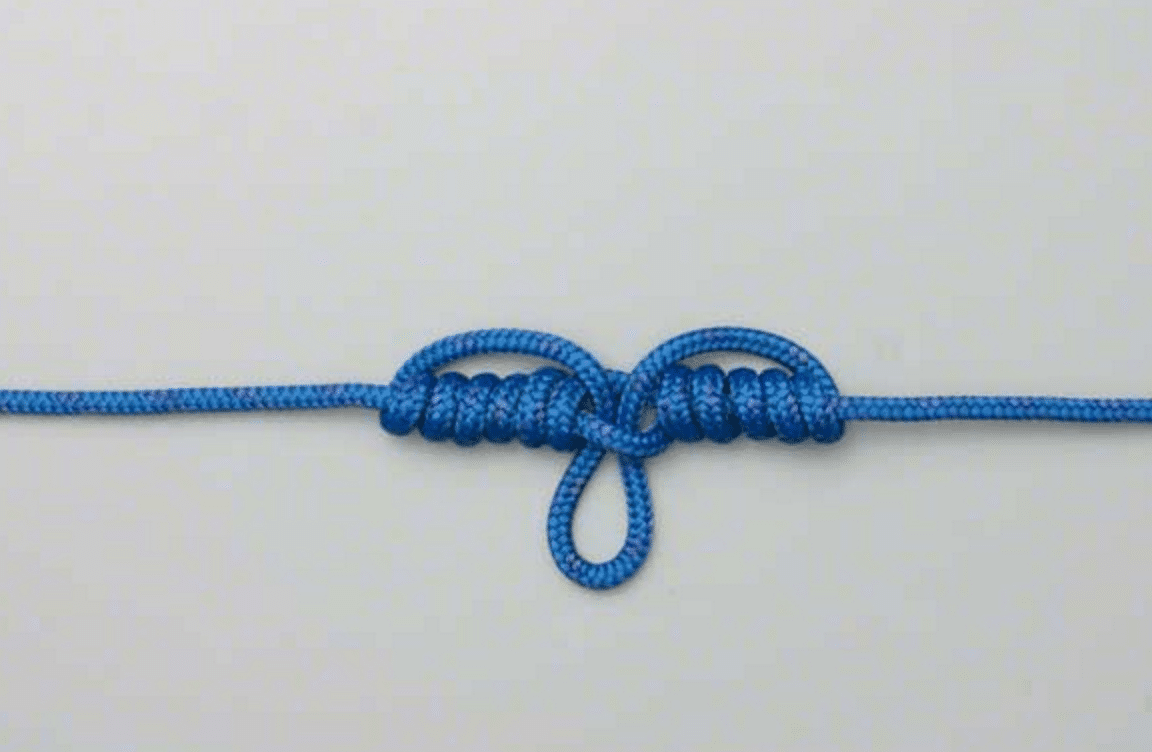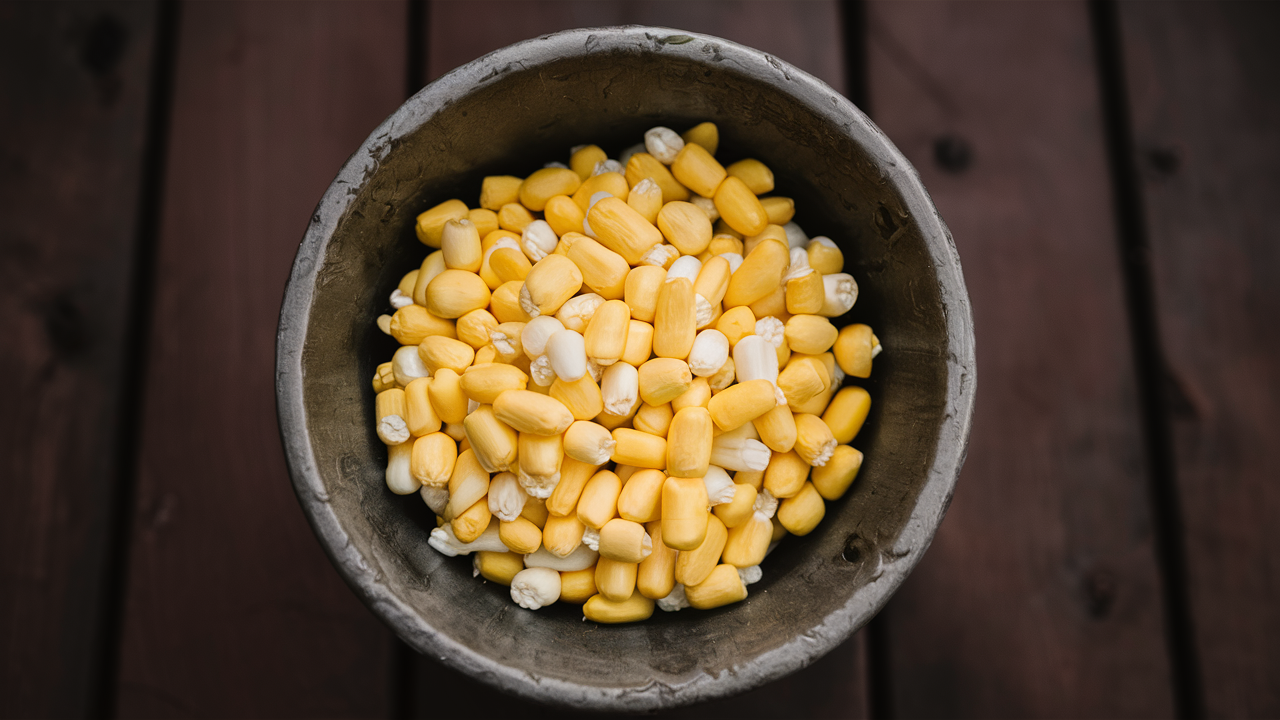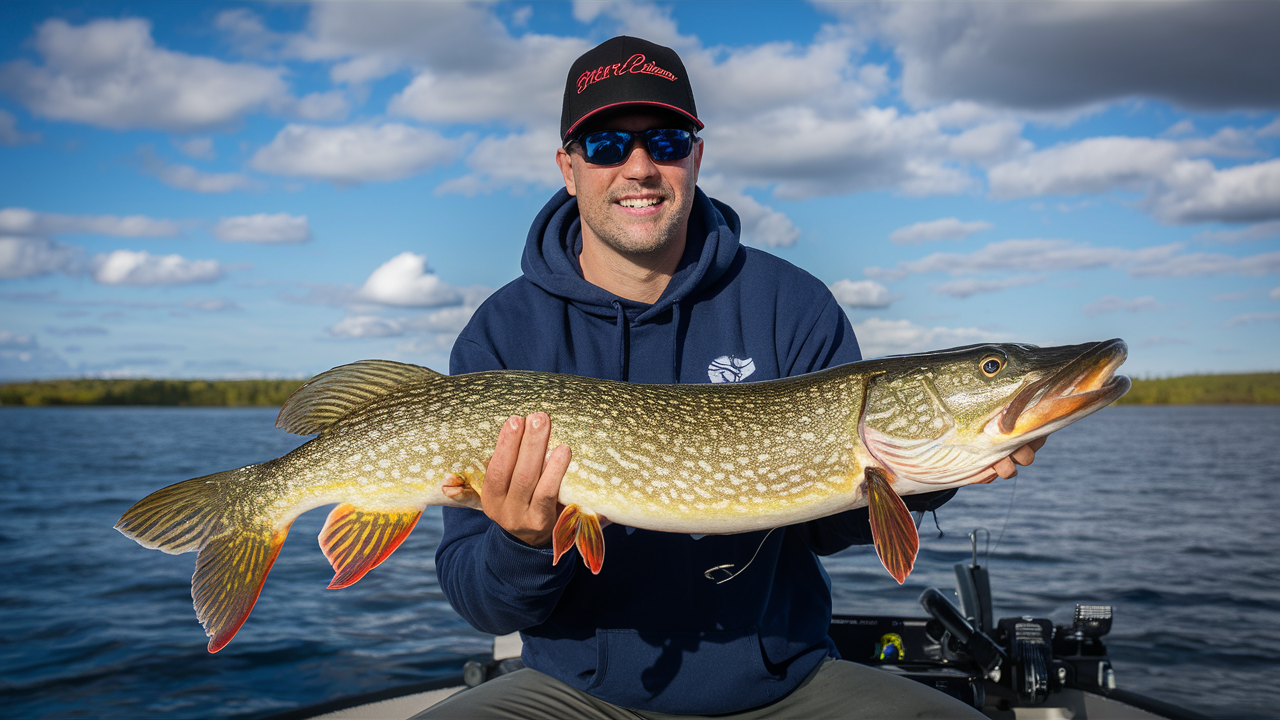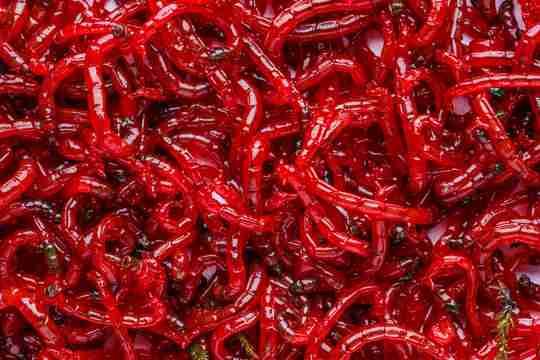
Feeder Fishing With Mosquito Larvae

12 min read
Feeder fishing with mosquito larvae is a method of fishing that involves using a feeder to dispense small amounts of mosquito larvae as bait to attract fish. This method can be effective for catching a variety of fish species, including carp, bream, and tench.
Using mosquito larvae as bait in feeder fishing has several benefits, including being a natural food source for many fish, being an inexpensive option, and helping to control the population of mosquitoes in an area.
In this article, we will provide step-by-step instructions for collecting and storing live larvae, tips for selecting the best quality larva, and information on the types of fish that are attracted to mosquito larva bait.
We will also offer suggestions for setting up and using a feeder filled with larvae and other bait and discuss the benefits of using mosquito larvae as bait in feeder fishing.
Feeder fishing with mosquito larva
Feeder fishing with mosquito larvae is a method of fishing that involves using a feeder to dispense small amounts of mosquito larva as bait to attract fish. This method can be effective for catching a variety of fish species, including carp, bream, and tench.
To use mosquito larvae as bait in feeder fishing, you will need to obtain a supply of live larvae and keep them in a container until you are ready to use them. When setting up your feeder, you can add a small amount of larva to the feeder along with other bait, such as groundbait or pellets.
The fish will be attracted to the feeder by the scent of the bait, and as they feed on the larva, you can use your fishing rod to try to catch them.
How to prepare mosquito larvae for use as bait
To prepare mosquito larvae for use as bait in feeder fishing, you will need to collect and store the live larva until you are ready to use them. To collect the larva, you can locate a source of mosquito larvae, such as a stagnant pool of water or a wetland area, and bring a small container and a scoop or net to collect the larva.
Look for a larva that is active and moving, and use the scoop or net to gently collect a small amount of larva.
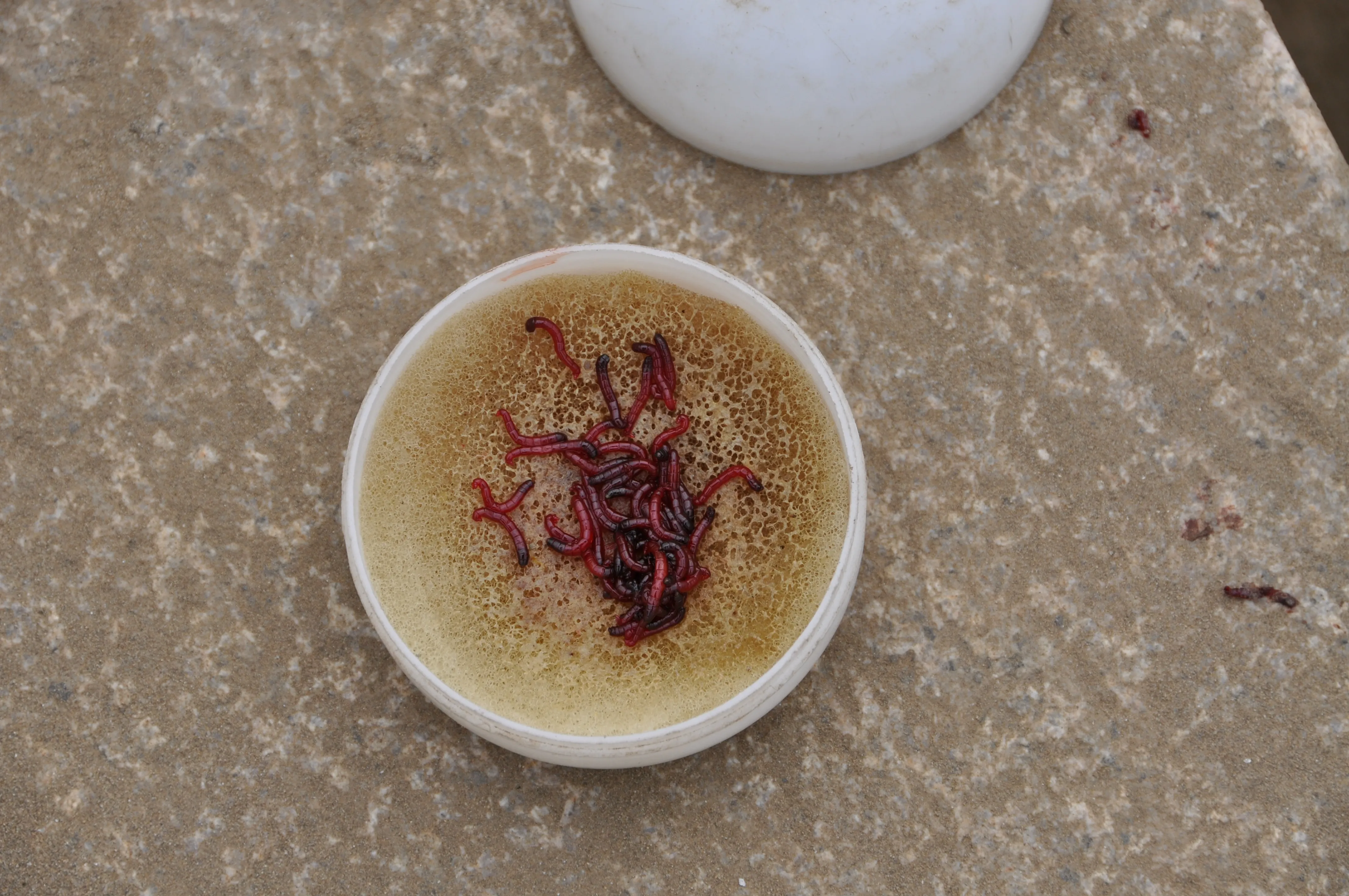
Transfer the larva to the container, making sure to leave enough space for them to move around, and add a small amount of water from the source where the larva was collected. Secure the lid on the container and place it in a cool, dark place until you are ready to use the larva as bait. It’s important to handle the larva gently and avoid overcrowding them in the container to ensure their survival.
You can also add a small amount of food, such as algae or small bits of organic matter, to the water to keep the larva well-fed until you are ready to use them as bait.
Step-by-step instructions for collecting and storing live larva
Collecting and storing live mosquito larvae for use as bait in feeder fishing can be done using the following steps:
- Locate a source of mosquito larvae. This can be a stagnant pool of water, a slow-moving stream or river, or a wetland area.
- Bring a small container and a scoop or net with you to collect the larva.
- Look for larvae that are active and moving. They are usually found near the surface of the water and maybe swimming in circles or wriggling around.
- Use the scoop or net to gently collect a small amount of larva. Avoid collecting any debris or other objects along with the larva.
- Transfer the larva to the container, making sure to leave enough space for them to move around.
- Place a small amount of water in the container with the larva. Avoid using tap water, as it may contain chemicals that can harm the larva. Instead, use water from the source where the larva was collected.
- Secure the lid on the container and place it in a cool, dark place until you are ready to use the larva as bait.
It’s important to handle the larva gently and avoid overcrowding them in the container to ensure their survival. You can also add a small amount of food, such as algae or small bits of organic matter, to the water to keep the larva well-fed until you are ready to use them as bait.
Tips for selecting the best quality larva
When selecting mosquito larvae for use as bait in feeder fishing, there are a few things to consider to ensure that you are choosing the best quality larva:
- Look for larvae that are active and moving. Avoid using larvae that are sluggish or not moving.
- Choose larvae that are a healthy size. Too small or too large larvae may not be as attractive to fish.
- Avoid using larvae that are discolored or damaged. This may indicate that they are not healthy or have been exposed to toxins or contaminants.
- If possible, choose larvae that have been collected from a clean, unpolluted source of water. This will help to ensure that the larva is not contaminated with chemicals or other harmful substances.
Using mosquito larvae For feeder Fishing
To use mosquito larvae for feeder fishing, you will need to prepare the larva as bait and set up a feeder to dispense the bait in the water.
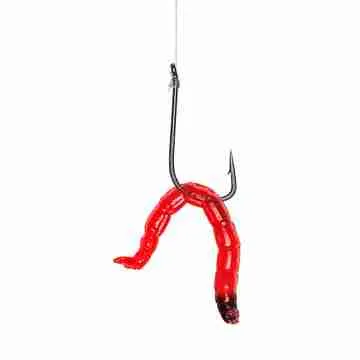
Collect and store the live larva as described in the previous answer. When you are ready to use the larva as bait, fill your feeder with a combination of larva and other bait, such as groundbait or pellets. The exact ratio will depend on the preferences of the fish in your area and the conditions of the water.
Place the feeder in the water at the desired location and adjust the flow of bait as needed. You may need to experiment with different flow rates to find the one that works best for the type of fish you are targeting. Use your fishing rod to try to catch the fish as they feed on the bait in the feeder.
Be patient and wait for the fish to take the bait, and be prepared to adjust your technique if you are not getting bites. Be sure to check the local fishing regulations before using a feeder filled with mosquito larvae and other bait. In some areas, the use of live bait is regulated or prohibited.
Rig for Feeders Fishing With Mosquito Larvae
You fish with a rig that complies with international regulations. Of course, a side arm or loop rig will also work, There is a monofilament 16 gauge line on the reel, the basket is topped with a bead, and the last 10 centimeters are twisted in such a way that they stand out nicely and tangles are avoided.
The decisive factor is the leader’s length and here only trying helps. Start with 35 centimeters and will continue to shorten the leader depending on the biting behavior. In the case of extremely cautious bites or fish that take the bait in their mouths but then hardly move, it may be necessary to shorten the leader to 10 centimeters.
Hooks for Feeders Fishing With Mosquito Larvae
The hook is also of great importance. It should be light and stable at the same time swear by barbless hooks when feeding mosquito larvae. The advantage of barbless hooks lies in the reduced risk of injury to hooked mosquitoes.
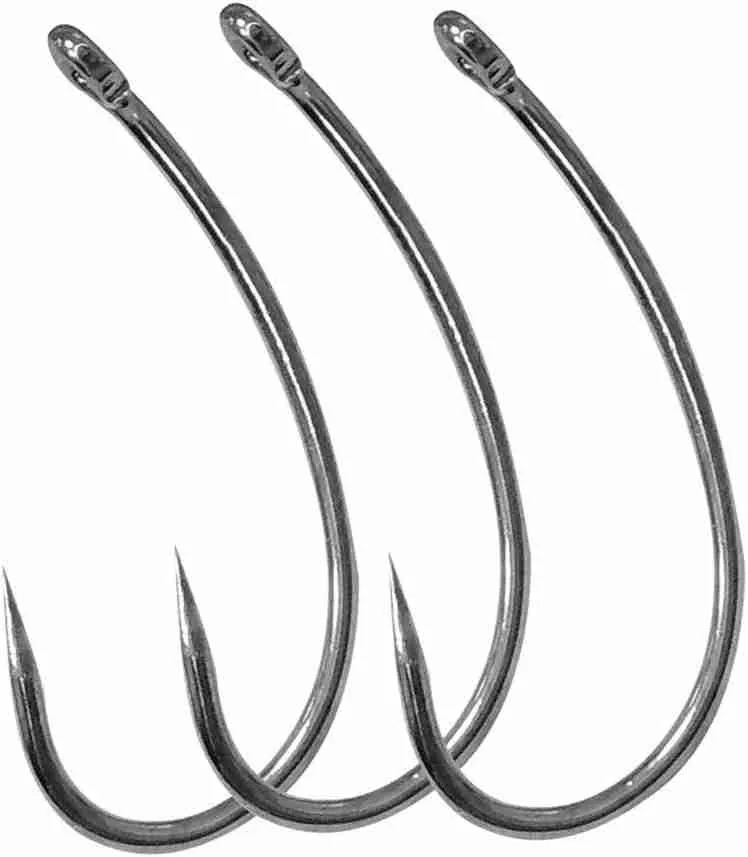
While hooks with barbs like to cause the mosquito to leak or even burst, or at least take its life and thus mobility, the large mosquito larvae on hooks without barbs remain more intact and therefore much more alive. A clear advantage in difficult conditions, even if a fish is lost during the fight due to the lack of a barb.
While the green hook is very light and thin and should be used under the most difficult conditions, the black hook is much more stable and of course correspondingly thicker in the wire. A sensitive tip together with a light picker or feeder rod, which should have an even, continuous action, ensure that you can also fish with 0.08mm-thick leaders without losing fish due to the leader breaks.
Types of fish that are attracted to mosquito larva bait
Mosquito larvae can be an effective bait for catching a variety of fish species, including:
Carp
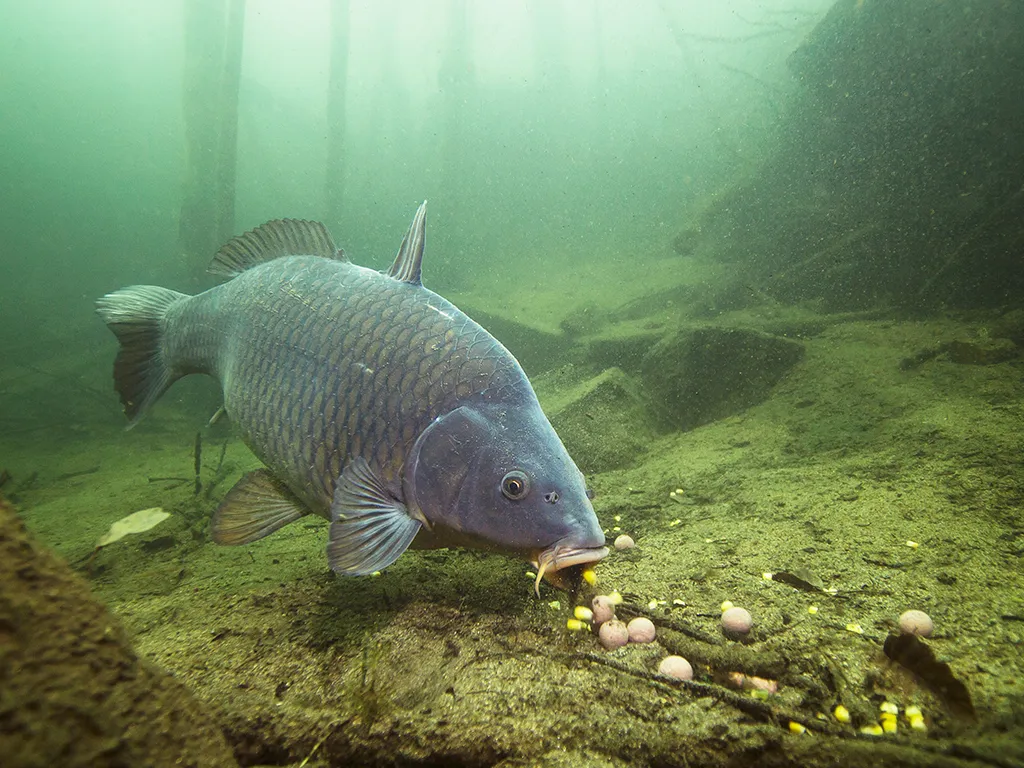
Carp are omnivorous fish that will feed on a wide range of food, including mosquito larvae. They are commonly found in still or slow-moving bodies of water and can be attracted to feeders with larva bait.
Bream
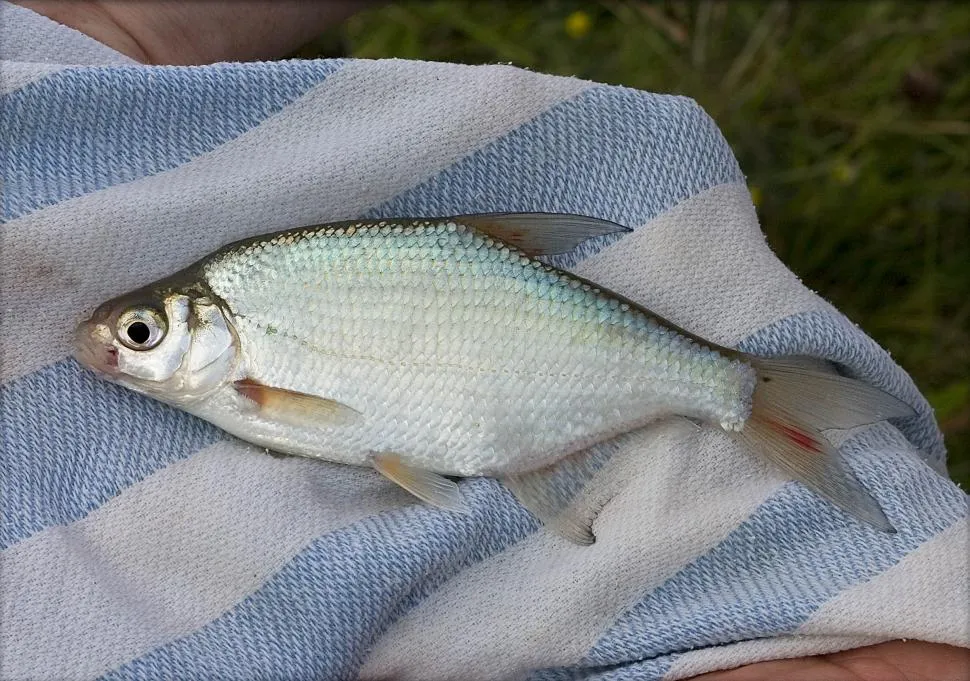
Breams are also omnivorous and will feed on a variety of food, including mosquito larvae. They are found in a variety of habitats, including rivers, streams, and lakes, and can be caught with larva bait in a feeder.
Tench
Tench is a type of freshwater fish that feed on a variety of small invertebrates, including mosquito larva. They are typically found in still or slow-moving bodies of water and can be attracted to feeders with larva bait.
Other fish species that may be attracted to mosquito larva bait include roach, perch, and rudd.
The benefits of using mosquito larvae as bait in feeder fishing
There are several benefits to using mosquito larvae as bait in feeder fishing:
- Mosquito larvae are a natural food source for many fish and can be particularly attractive to omnivorous species that will feed on a wide range of food.
- Using mosquito larvae as bait can be an inexpensive option, as the larva can be collected for free in many areas.
- Mosquito larvae are easy to store and transport, making them a convenient choice for bait.
- This method of bait can help to control the population of mosquitoes in an area, as the fish that consume the larva will help to reduce the number of adult mosquitoes.
- Using mosquito larvae as bait can be a fun and interesting way to try something
The effectiveness of this method for catching various types of fish
Feeder fishing with mosquito larvae can be an effective method for catching a variety of fish species. Mosquito larvae are a natural food source for many fish and can be particularly attractive to omnivorous species that will feed on a wide range of food.
Some examples of fish that may be attracted to mosquito larva bait include carp, bream, tench, roach, perch, and rudd.
The effectiveness of this method will depend on a number of factors, including the preferences of the fish in the area, the conditions of the water, and the skill of the angler. Using a combination of different bait, including mosquito larvae, and experimenting with different techniques can help increase your chances of success when feeder fishing.
Feeding the Fish With Mosquito Larvae
Lively mosquito larvae are supposed to lure the roach and bream out of their reserve and to get wildly twitching mosquito larvae to the bottom of the water and also to have live larvae on the hook over the entire fishing time is the big challenge.

Food would certainly attract the attention of the fish, but it would also satiate them and mosquito larvae do not feel at all comfortable surrounded by food, because salts and sugars dramatically shorten the lifespan of the sensitive larvae. What remains is earth, but earth usually has the habit of being heavy and very sticky.
When fed by hand, this ball would immediately break apart on the surface, but the potting soil stays in the basket long enough and only explodes when it reaches the bottom of the water. The earth is so loose that there is still a lot of air trapped, which naturally wants to rise in the water and push the earth out of the basket. Without chemical additives, the soil is so neutral that the mosquito larvae stay alive in it.
Wraps the mosquito larvae fishing feeder in duct tape so the little larvae don’t get a chance to get stuck anywhere in the basket. An additional effect of this basket, which is now only open at both ends, is that the very loose and fluffy soil with the small mosquito larvae does not come into contact with too much water and thus leaves the basket too quickly.
Comparison to other types of bait
When comparing mosquito larvae to other types of bait, it’s important to consider the natural vs. artificial aspect. Mosquito larvae are a natural bait that can be attractive to fish that feed on small invertebrates, while artificial baits, such as lures and flies, are designed to mimic the appearance and movement of natural prey and can be effective for attracting fish.
Another factor to consider is availability; mosquito larvae may be more difficult to obtain in some areas compared to other natural baits, such as worms or insects, while artificial baits can be purchased at most fishing supply stores.
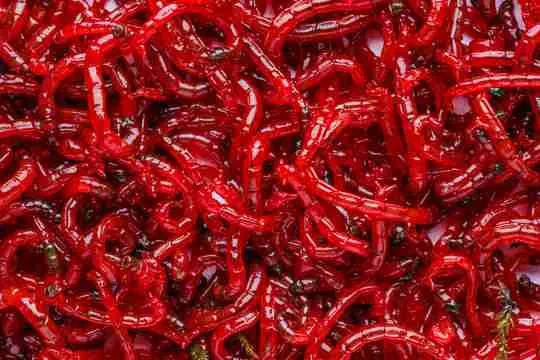
The cost of the bait is also a consideration; mosquito larvae can be collected for free, making them an inexpensive option, while artificial baits may be more expensive. In terms of effectiveness, the best bait will depend on the preferences of the fish and the conditions of the water; mosquito larvae may be particularly effective for attracting omnivorous fish, while other baits, such as worms or small fish, may be more attractive to predatory species.
Ultimately, the best bait to use in feeder fishing will depend on the specific needsand goals of the angler and the preferences of the fish in the area.
Conclusion
In conclusion, feeder fishing with mosquito larvae is a method that can be effective for catching a variety of fish species and has several benefits. Mosquito larvae are a natural food source for many fish and are an inexpensive and convenient choice for bait.
Using mosquito larvae as bait in feeder fishing can also help to control the population of mosquitoes in an area. To use mosquito larvae as bait, you will need to collect and store live larvae and prepare a feeder with a combination of larvae and other bait.
